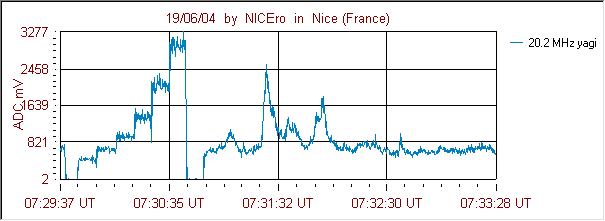
The Solar Event on June 19/20
Joachim Köppen DF3GJ Kiel/Strasbourg/Illkirch Summer 2004
Here's something on the solar radio storm observed by RadioJove stations:
It started on Sat, 19 Jun 2004 at 08:39:16 UT with an email by Ruggero Ulivastro to everybody:
Hi list,
Very interesting day today for Sun monitoring. I got almost continous
Sun bursting this morning. here is a sample just after calibrating the
system. The burst peaks between 603kK and 1200kK.
Ruggero NICEro

and ...
Continuous Sun bursting since I started the observations (06:36UT) and it is continuing, I hope it will last all the day for our US friends Have also a look at the Nancay's spectrum...
Ruggero
Then at 11:31:35 UT from Thomas Ashcraft:
Hi Ruggero and everyone,
"Region 10635 developed further in the trailing spot section where a magnetic delta structure formed. "
Looks like ongoing continuum storming with the possibility of an M-Class flare as long as that sunspot group is in dynamic development.
I have noted in the past when a complex spot group rotates to the center of the Sun and directly faces Earth ( like now) then the CTM ( continuum storming) is more receivable.
Of course, when the sunspot group goes into decay which is inevitable sooner or later then the storming ceases so get this activity while it is active. These conditions are not common.
Tom A
At 19:37:37 UT, from Jim Sky:
The continuum storming is continues.. 1932 UT June 19 the storming is dramatic on the WCCRO Spectrograph.
To get the spectrograph software (FREE) visit: http://jupiter.wcc.hawaii.edu/spectrograph_software.htm
Suggest you use a Color Gain of about 2.7.
Aloha,
Jim
On June 20 at 00:49:14 UT
It is 0040 UT June 19 2004. In Hawaii it approaches 3 in the afternoon. The solar continuum storm continues in magnificent fashion. I know we have a few observers in Australia and they should be able to see the storm for several more hours.
On your SkyPipe strip chart the storm should appear as rolling series of hills, with few of the sharp shark fin signatures we normally see in Type III solar bursts.
Attached is a JPEG image of the 10 minute scan from the WCCRO spectrograph. In my previous post I suggested a color gain of 2.7 in the Spectrograph settings. I should have also suggested a color offset of 180.
Aloha,
Jim Sky
Here's what John W Samouce sent at 00:11:39 UT on June 20;
Attached are a couple of samples from today's solar continuum storming.
It went on all day. It was somewhat stronger than yesterday.
Dusty
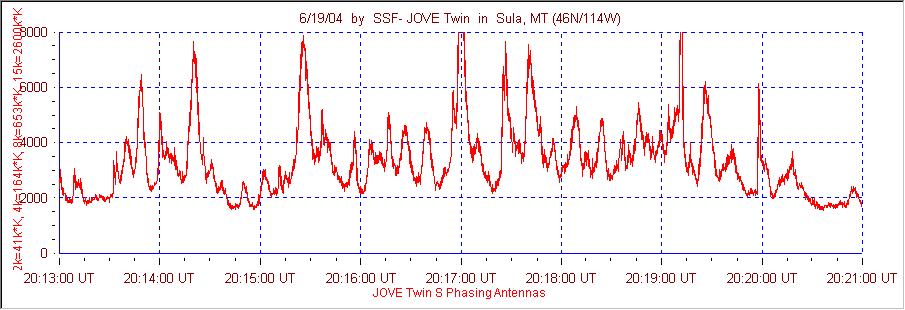
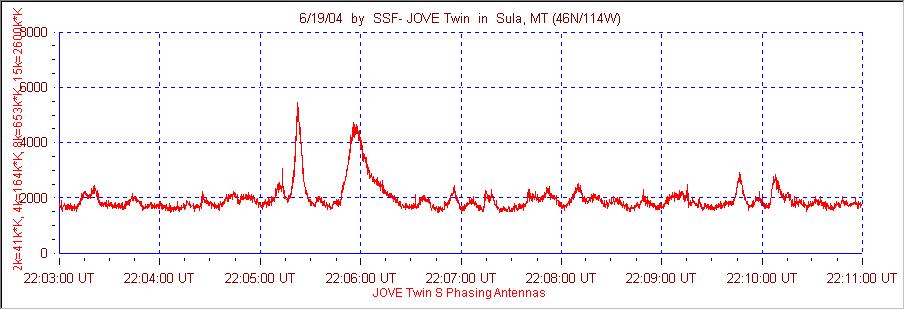
On sunday, at 07:40:49 UT:
Another excellent day for Sun observations. Continuous storms
Ruggero
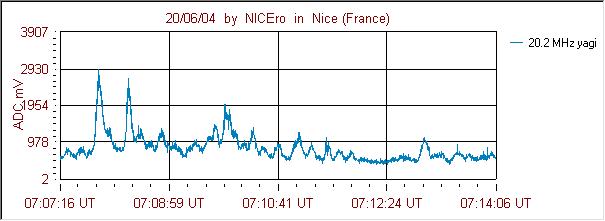
On Monday 21 June George Lauffer sends the gems of his sunday data:
Hi all in RJ,
the continuum storm from 040619 and 20, caught by RJ-members around the world found its
way as well into my DD-antenna.
Both long .spd-files have been uploaded to the RJ-arcvhive.
Some of the best isolated .jpegs are attached as well here.
Greetings from Black Forest (Germany)
George




The real time data from the Nançay Decametric Array from monday still shows radio bursts, but tuesday is going to be a quiet day?:
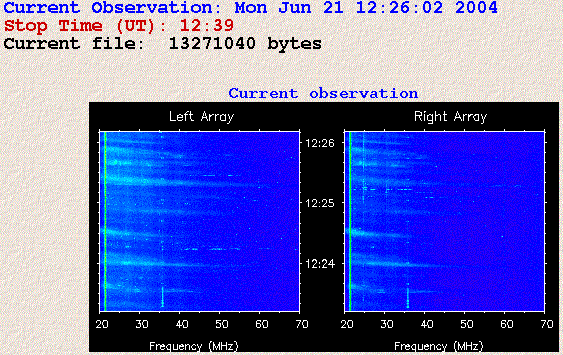
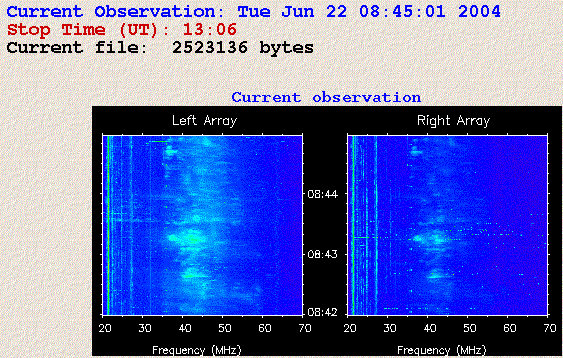
Here are dynamical spectra by the Nançay decametric array from those days.
For the rest, have a look in the Radio Jove Data Archive at NASA's GSFC ...
| Top of the Page | back to Main Page | back to my Home Page |